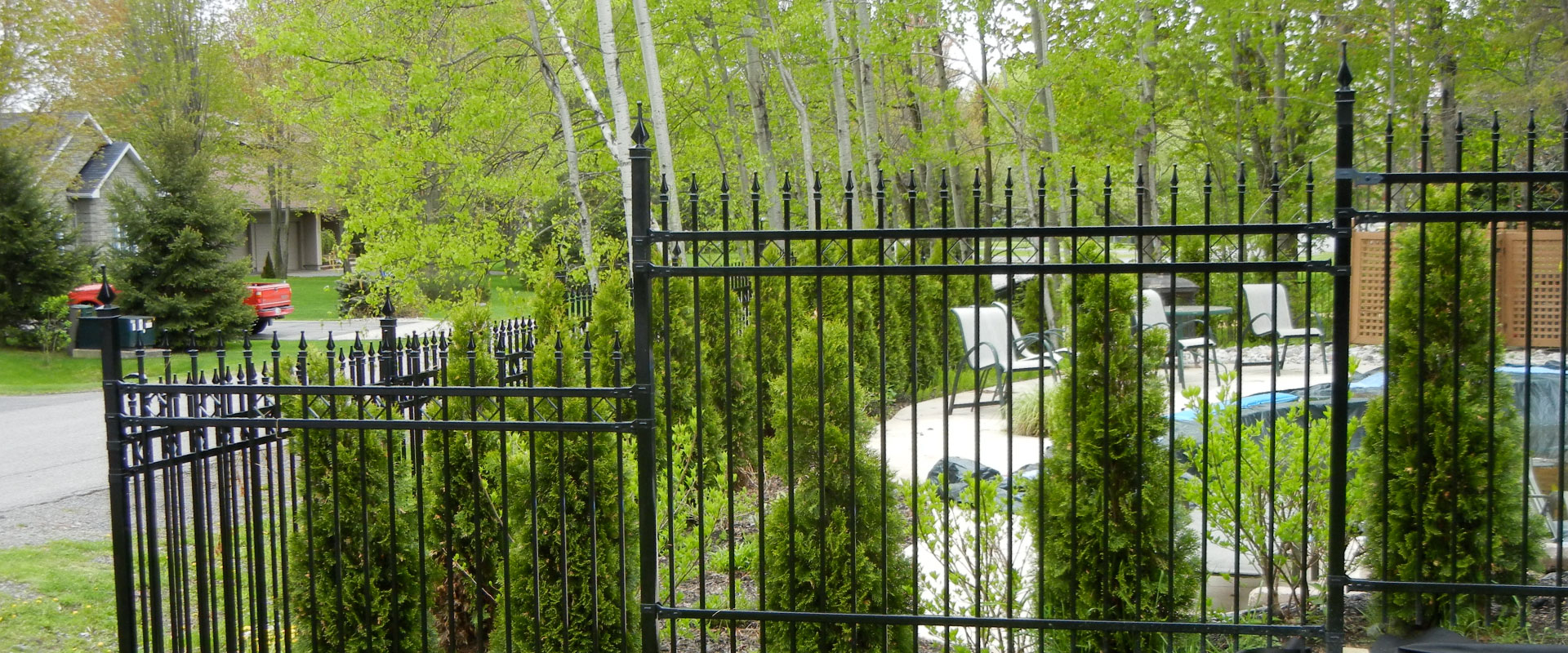All Categories
Featured

Your fence is a necessary part of your residential property, providing personal privacy, protection, and visual appeal. There are several methods you can implement to safeguard your fencing and lengthen its life.
- Pick the Right Product. The first step in shielding your fence from weather-related damages is to select the ideal product for your climate. Some materials are extra immune to the aspects than others.
Wood Fencings: While traditional wood fencings supply a natural, eye-catching look, they are particularly susceptible to water bug, damage, and rot invasion. If you pick timber, select pressure-treated lumber or wood kinds that are a lot more immune to wetness, such as cedar or redwood. Plastic Fences: Plastic is a low-maintenance choice that stands up to fading, fracturing, and bending. It's likewise unsusceptible to rot and insects, making it suitable for locations with high moisture or direct exposure to rainfall. Metal Fencings: Light weight aluminum and functioned iron fencings are immune and durable to weathering. They can corrosion if subjected to moisture for prolonged periods. Choose a powder-coated or galvanized steel fencing to decrease the risk of rust. Composite Fences: These are made from a blend of wood fibers and plastic, offering the most effective of both globes-- resilience and a natural look. Compound fences are immune to dampness, fading, and decaying, making them great for climates with constant rain or snow. 2. Apply Protective Coatings. No matter the material, applying a protective coating can help guard your fencing from weather damage.

Wood Fences: A good-quality stain or sealant can assist protect your timber fencing from dampness, UV rays, and pests. These coatings develop a barrier that protects against water from seeping right into the wood and creating rot. You must apply a fresh coat of sealer every pair or stain of years, depending upon your environment and the level of direct exposure to rain and sunlight. Vinyl Fences: Although plastic fences are normally immune to weathering, they can still experience staining as a result of the sunlight's UV rays. You can make use of specific vinyl cleaners or UV protectants to preserve the color and appearance of your fence. Steel Fencings: For metal fences, think about applying a rust-resistant guide and a layer of paint made for outside use. Powder layer is an additional exceptional alternative for metal fencings, as it creates a long lasting, weather-resistant finish that resists rust and deterioration. 3. Normal Cleaning and Upkeep. Preserving your fence routinely is vital to preventing damages from the aspects. Dirt, leaves, and other debris can accumulate on your fencing, which can create discoloration, mold and mildew, and mold over time.
Wood Fencings: Tidy your wooden fence every six months with a mild detergent service or a pressure washer (on a low setting) to remove dirt and gunk. Watch out for very early signs of rot, particularly at the base of the fence messages where dampness has a tendency to gather. Plastic Fencings: Vinyl fencings are very easy to tidy with soap and water. Make use of a mix of vinegar and water to gently scrub the influenced locations if you see mold and mildew or mold. Avoid rough chemicals that might harm the surface area. Steel Fencings: Frequently clean metal fences with a soft towel or sponge to get rid of rust-causing debris. For wrought iron fences, take into consideration applying a rust-inhibiting item to stop corrosion. 4. Proper Installment and Positioning. Correct setup of your fencing can go a long means in protecting it from weather-related damages. Make sure that your fencing is securely anchored and that blog posts are set deep sufficient into the ground to stop moving throughout heavy winds or storms. If your fencing is subject to heavy winds, mounting supporting at key points can provide additional assistance.
Additionally, take into consideration the positioning of your fence. Plant shrubs or trees tactically around your fencing to offer some all-natural security from rough winds, extreme sunshine, or motoring rainfall if feasible. Nonetheless, beware not to plant as well near to the fence, as roots can harm or shift blog posts gradually.
- Address Tornado Damage Promptly. Tornados, particularly those with high winds or hailstorm, can trigger instant damage to your fencing. After a storm, inspect your fence for damaged areas, leaning posts, or fallen debris.
- Winterize Your Fence. Cold temperature levels and ice can be specifically harming to wooden fences. To avoid this, make certain that the base of your fence messages is elevated and not sitting in pooled water.
Conclusion. Weather-related damage is an unavoidable part of owning a fencing, however with the best safety measures and normal maintenance, you can substantially expand the life of your fence. Select durable materials matched for your environment, use safety finishes, tidy frequently, and guarantee correct setup. With these actions, you can protect your fencing from the aspects and preserve its appearance and performance for several years to find.
Latest Posts
Safeguard Your Financial Investment with Professional Seamless Gutter Installation
Published May 25, 25
1 min read
Explore the Premier Auto Repair Coupons in Montclare, Chicago
Published May 22, 25
1 min read
Discover Montclare Auto Repair’s Premier Auto Repairs and Why Drivers Trust Them
Published May 22, 25
1 min read
More
Latest Posts
Safeguard Your Financial Investment with Professional Seamless Gutter Installation
Published May 25, 25
1 min read
Explore the Premier Auto Repair Coupons in Montclare, Chicago
Published May 22, 25
1 min read
Discover Montclare Auto Repair’s Premier Auto Repairs and Why Drivers Trust Them
Published May 22, 25
1 min read